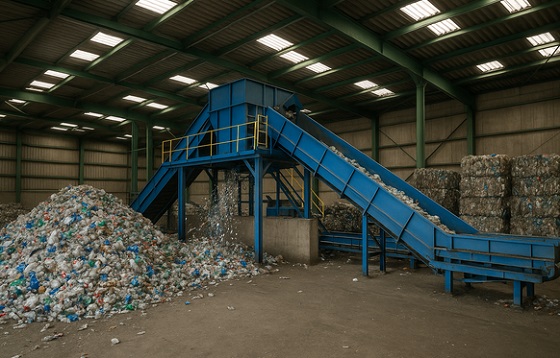Crime
Lac La Biche RCMP and Eastern Alberta District Rural Crime Reduction Team arrest 10 in enforcement operation

Lac La Biche, Alberta – Between April 10, 2019 to April 12, 2019, the Lac La Biche RCMP and Eastern Alberta District Rural Crime Reduction Unit (EADRCRU), in conjunction with Cold Lake Police Dog Services (PDS) and EAD Criminal Intelligence, conducted operations in the Lac La Biche area which resulted in 10 arrests, search warrants being executed, the seizure of firearms and drugs, and the recovery of several stolen vehicles.
On April 10, 2019, EADRCRU and Lac La Biche RCMP located a stolen truck in a rural location South of Lac La Biche near Highway 36. Two individuals in a residence near where the stolen vehicle was located were wanted on outstanding warrants from Rocky Mountain House, Smoky Lake, Beaumont, St Paul, and Edmonton. Both were arrested.
A 16-year-old from Beaumont, who cannot be named due to the provisions of the Youth Criminal Justice Act (YCJA), was arrested for outstanding warrants, which included charges of:
- Resisting a peace officer
- Failing to comply with conditions of a youth sentence order
The male was released to an adult and is scheduled to appear in court in Edmonton on May 22, 2019 and Lac La Biche on May 24, 2019.
Tyler Monias (19) from St Paul was arrested for outstanding warrants, which included charges of:
- Failing to attend court
- Failing to comply with a recognizance (X3)
- Failing to comply with the conditions of a youth sentence order
He was additionally charged with resisting a peace officer and failing to comply with a recognizance. He was released following a bail hearing and is scheduled to appear in court in Rocky Mountain House on April 24, 2019 and Fort Saskatchewan on May 9, 2019.
The stolen vehicle was towed for forensic analysis.
Later that day, a vehicle was spotted by EADRCRU avoiding Peace Officers conducting traffic control on the South end of Lac La Biche. RCMP members stopped the vehicle and learned that the driver was criminally prohibited from operating a motor vehicle.
Joel Hope-Jackson (29) of Hay River was charged with driving while prohibited. He was released and is scheduled to appear in court in Lac La Biche on June 10, 2019.
RCMP members then moved to a residence in Beaver Lake where they determined a priority offender was hiding from police. RCMP members entered the residence and located the offender in the basement who resisted arrest, but was apprehended without injury.
Aaron Anderson (33) from Beaver Lake was charged with resisting a peace officer and was arrested for his outstanding warrants, which included charges of:
- Failing to comply with a recognizance (X3)
- Resisting a peace officer (X2)
- Escaping lawful custody
He was held in custody following a bail hearing and is scheduled to appear in court in Lac La Biche on April 15, 2019.
On April 11, 2019, EADRCRU and Cold Lake PDS located two stolen vehicles nearby a residence in Heart Lake while looking for a priority offender in that area. Another male wanted on outstanding warrant from Edmonton was also located nearby and arrested.
Cody ERASMUS (37) of Heart Lake, was arrested for his outstanding charges, which included:
- Fraud
- Possession of a stolen credit card
- Possession of property obtained by crime (X3)
- Failing to comply with a probation order (X2)
- Dangerous driving
- Flight from police (X2)
- Obstructing a peace officer
He was later released and is scheduled to appear in court in Edmonton on May 8, 2019.
The search for the priority offender continued and brought RCMP members to a row of apartment buildings in Lac La Biche. During the search of an apartment of interest, EADRCRU located another wanted offender and arrested him without incident.
Tristan Monias (22) of Heart Lake was arrested for his outstanding charges from Lac La Biche, which included:
- Aggravated assault
- Breaking and entering
- Theft of truck (X2)
- Mischief
He was held in custody following a bail hearing and is scheduled to appear in court in Lac La Biche on April 15, 2019.
Further investigation in the apartment buildings resulted in RCMP uncovering a drug trafficking operation being run out of one of the apartments. RCMP members executed a search warrant on the apartment and recovered stolen firearms, prohibited devices, over 35 grams of a substance believed to be crack-cocaine packaged for sale, nearly 400 grams of cannabis, and approximately 250 “scratch and win” style lottery tickets.
Clayton Lucier (30) of Lac La Biche was charged with multiple offences, which include:
- Possession of a controlled substance for the purpose of trafficking
- Possessing cannabis for the purpose of selling
- Possession of a prohibited weapon (X2)
- Possession of a weapon for a dangerous purpose
- Possession of property obtained by crime
- Possession of a weapon obtained by crime (X2)
- Unsafe storage of a firearm (X2)
He was released following a bail hearing and is scheduled to appear in court in Lac La Biche on April 29, 2019.
“Getting illegal guns off of the street is a priority for our unit,” said Cst. Guillaume Wilson (EADRCRU). “It’s particularly concerning in this case that the firearms were seized in such close proximity to an elementary and middle school. We will continue to partner with the Lac La Biche RCMP to do everything we can to eradicate this type of crime in the community.”
Late that afternoon, an anonymous tip was received indicating the location of the priority offender EADRCRU had been looking for earlier that morning. RCMP members intercepted a vehicle the offender was occupying in Lac La Biche. The offender tried escaping, but was quickly apprehended by EADRCRU after a short foot chase.
Cason Monias (18) of Lac La Biche was charged with resisting a peace officer (X2) and failing to comply with a probation order (X2). He was also arrested for his outstanding warrants, which included charges of:
- Failing to comply with a youth order (X6)
- Possession of property obtained by crime over $5,000 (X2)
He was held in custody following a hearing and is scheduled to appear in court in Lac La Biche on April 15, 2019.
On April 12, 2019, as a result of collaboration with the Strathcona County General Investigation Section, a joint operation was organized by EADRCRU, Lac La Biche RCMP, Cold Lake PDS, and EAD Criminal Intelligence to apprehend Clayton Huppie who was wanted in connection with an armed robbery incident in Sherwood Park. A Crime Stoppers tip had been received that Huppie was hiding at a residence in Beaver Lake.
RCMP members located the residence and surrounded it. RCMP members entered the residence and located Huppie hiding in the basement of the house with another male. Both were arrested and a prohibited firearm was also recovered. Additionally, a stolen vehicle hidden behind the residence was located by EADRCRU.
Clayton Huppie (35) of Lac La Biche was arrested for his outstanding charges, which included:
- Robbery
- Possession of a weapon for a dangerous purpose
- Driving while prohibited
- Failing to comply with a recognizance (X3)
He was also charged with several new offences, including:
- Failing to comply with conditions of a recognizance
- Possession of a prohibited firearm
- Possession of a weapon contrary to an order
He was remanded in custody following a bail hearing and is scheduled to appear in court in Sherwood Park on April 24, 2019 and Lac La Biche on April 15, 2019.
Brian Boostrom (24) of Lac La Biche was charged with resisting a peace officer and failing to comply with a probation order.
He was released and is scheduled to appear in court in Lac La Biche on May 13, 2019.
“The offenders operating in Eastern Alberta need to recognize that EADRCRU is not going away,” said Cst. Wilson. “We are going to continue using an intelligence based approach and partnerships to apprehend offenders and make our communities safer.”
2025 Federal Election
Nine Dead After SUV Plows Into Vancouver Festival Crowd, Raising Election-Eve Concerns Over Public Safety

 Sam Cooper
Sam Cooper
In Vancouver, concern about public safety — particularly assaults and violent incidents involving suspects previously known to police — has been a longstanding civic and political flashpoint
In an evolving mass-death investigation that could have profound psychological and emotional impacts on Canada’s federal election, Vancouver police confirmed Sunday that nine people were killed Saturday night when a young man plowed a luxury SUV through a festival block party in South Vancouver, leaving a trail of instant deaths and horrific injuries, with witnesses describing convulsing bodies and wounded toddlers in the aftermath.
The driver, a 30-year-old Vancouver resident known to police, appeared to be shaken and apologetic, according to eyewitness accounts and video from the scene. Authorities stated the case is not being treated as terrorism.
Late Saturday night, Vancouver police confirmed at a news conference that the man, who was known to police “in certain circumstances,” had been arrested.
The incident occurred around 8:14 p.m. during the annual Lapu Lapu Festival, a celebration of Filipino Canadian culture held near East 41st Avenue and Fraser Street. Thousands of attendees had packed the area for cultural performances, food stalls, and community events when the luxury SUV entered the closed-off area and accelerated into the crowd. Photos of the vehicle, with its doors ajar and a crumpled front end, indicate it was an Audi Q7 with black tinted windows.
In Vancouver, concern about public safety — particularly assaults and violent incidents involving suspects previously known to police — has been a longstanding civic and political flashpoint. Saturday’s tragedy sharpened those anxieties, potentially influencing the attitudes of undecided voters in a federal election that has focused on social disorder and crime framed by the Conservative side, with the Liberal frontrunners countering that firmer sentencing laws would undermine Canada’s Charter of Rights.
Witnesses to Saturday’s tragedy described scenes of chaos and terror as the SUV slammed into festival-goers, accelerating through the crowd.
“I thought it was fireworks at first — the sounds, the screams — then I saw people flying,” one witness told reporters on the scene.
Authorities have launched a full criminal investigation into the suspect’s background, including previous interactions with law enforcement.
The tragedy unfolded during the final, high-stakes weekend of Canada’s federal election campaign, throwing public safety and political leadership into sharp relief.
On Saturday night, before news of the Vancouver incident broke, Conservative leader Pierre Poilievre posted a message on X at about 10 p.m., declaring, “This election comes down to one word. Change. Our Conservative plan will bring home an affordable life and safe streets — For a Change.”
Meanwhile, Liberal leader Mark Carney, campaigning in the Greater Toronto Area, posted at roughly the same time, “Dropped in on dim sum today in Markham. The best part of this campaign has been meeting Canadians in their communities — and hearing how excited they are about our future.”
As the scale of the tragedy became clear, both leaders shifted sharply in tone.
Poilievre posted again around 1 a.m. Sunday, writing, “I am shocked by the horrific news emerging from Vancouver’s Lapu Lapu Day Festival tonight. My thoughts are with the Filipino community and all the victims targeted by this senseless attack. Thank you to the first responders who are at the scene as we wait to hear more.”
Carney, who had posted shortly before midnight that, “We don’t need anger. We need to build,” followed with a direct statement on the Vancouver attack around 2 a.m. Sunday morning, writing, “I am devastated to hear about the horrific events at the Lapu Lapu festival in Vancouver earlier this evening. I offer my deepest condolences to the loved ones of those killed and injured, to the Filipino Canadian community, and to everyone in Vancouver. We are all mourning with you.”
Online, the tragedy quickly reignited concerns about violent crime, bail, and the rights of offenders — issues that have increasingly polarized Canadian political debate.
In response to Carney’s statement, a comment from an account named Willy Balters reflected the growing anger: “He’ll be out on bail by morning right?”
Another commenter, referencing past political controversies over judicial reform, posted to Carney, “You stood behind a podium and declared murderers’ Charter Rights can’t be violated.”
The raw public sentiment mirrored broader criticisms that Canada’s criminal justice system — and its perceived leniency toward repeat offenders — has failed to keep Canadians safe.
Just days prior, a different incident tapped into similar public anger. B.C. Conservative MLA Elenore Sturko posted, “A visitor to Vancouver was brutally attacked by a man only hours after he was released on bail for assaulting police and uttering threats. @Dave_Eby — is this the kind of welcome visitors to FIFA will have to look forward to? BTW, this violent man is out on bail AGAIN!”
That incident continued to draw heated social media on Sunday, with David Jacobs, a well-known conservative-leaning commenter, posting, “A man, while out on bail for assaulting a peace officer, violently assaulted a woman. He’s out on bail again. The Liberals put criminal rights far ahead of victim rights and community safety. Stop the insanity. Vote for change!”
The Bureau is a reader-supported publication.
To receive new posts and support my work, consider becoming a free or paid subscriber.
Invite your friends and earn rewards
2025 Federal Election
Police Associations Endorse Conservatives. Poilievre Will Shut Down Tent Cities

From Conservative Party Communications
Under the Lost Liberal decade, homelessness has surged by 20% since 2018 and chronic homelessness has spiked 38%. In cities like Nanaimo, Victoria and London, the number of people living in tents and makeshift shelters has exploded. In Toronto alone, there were 82 encampments in early 2023—now there are over 200, with an estimated 1,400 in Ontario.
Yesterday, Conservative Leader Pierre Poilievre received the endorsement of the Toronto Police Association, the largest single association of its kind in Canada, representing approximately 8,000 civilian and uniformed members.
This follows the endorsement by the police associations of Durham, Peel, Barrie, and Sault Ste. Marie of the Conservative plan to stop the crime and keep Canadians safe, after the Liberal government’s easy bail and soft-on-crime policies unleashed a wave of violent crime.
“These men and women put their lives on the line every day to keep our streets safe,” Poilievre said. “Our Conservative team is honoured to have their support and will back them up with laws to help them protect all Canadians.”
Poilievre also announced that a new Conservative government will ensure that police have the legal power to remove dangerous encampments to end the homelessness and the mental health and addiction crisis that has trapped thousands in dangerous tent cities and make life unsafe for law-abiding Canadians who live near them.
“Parks where children played are now littered with needles. Small businesses are boarded up and whole blocks of storefronts are shuttered because their owners can’t afford to deal with constant break-ins and vandalism,” Pierre Poilievre said. “Public spaces belong to everyone, but law-abiding citizens, especially families and seniors, are being pushed out to accommodate chaos and violence.”
Canadian cities have a mixed record of dealing with encampments in public places, with some not acting because they don’t believe they have the legal authority to remove the camps. Conservatives will work with provinces and ensure law enforcement has the clear legal tools they need to remove encampments and give Canadians back the safe streets and public spaces they deserve.
A Poilievre-led government will do this by reversing the Liberals’ radical pro-drug policies and by:
- Amending the Criminal Code to give police the tools to charge individuals when they endanger public safety or discourage the public from using, moving through, or otherwise accessing public spaces by setting up temporary structures, including tents.
- Clarifying in law that police can dismantle illegal encampments and ensure individuals living in them who need help are connected with housing, addiction treatment, and mental health services.
- Giving judges the power to order people charged for illegally occupying public spaces with a temporary structure and simple possession of illegal drugs to mandatory drug treatment.
- Returning to a housing first approach to homelessness, ensuring people get off the streets into a stable place to live with the support they need to rebuild their lives.
Under the Lost Liberal decade, homelessness has surged by 20% since 2018 and chronic homelessness has spiked 38%. In cities like Nanaimo, Victoria and London, the number of people living in tents and makeshift shelters has exploded. In Toronto alone, there were 82 encampments in early 2023—now there are over 200, with an estimated 1,400 in Ontario.
These encampments are a direct result of radical Liberal policies such as drug decriminalization and unsafe supply. They are extremely dangerous for the people trapped in them, who endure overdoses, assaults, including sexual assaults, human trafficking, and even homicide, as well as the community around them.
Under the Poilievre plan, tent cities will no longer be an option—but recovery will be. Conservatives will give law enforcement the tools they need to help clean up our streets, deal with chronic offenders, and provide truly compassionate recovery and treatment where it is needed.
“Instead of getting people the help they need, the Liberals abandoned our communities to chaos,” Poilievre said. “Leaving people trapped by their addictions to live outdoors through Canadian winters, sick, malnourished, cold, wet and vulnerable is the furthest thing from compassionate.”
A Conservative government will also overhaul the Liberals’ dangerous pro-drug policies that have led to over 50,000 overdose deaths over the Lost Liberal Decade. Instead of flooding our streets with taxpayer-funded hard drugs, we will invest in recovery to break the cycle of despair and offer real hope.
Conservatives will allow judges to sentence offenders to mandatory treatment for addiction, and we will fund 50,000 addiction treatment spaces, ensuring that those struggling with substance use get the support they need to recover—because real compassion means helping people get better, not enabling their suffering.
In addition to these measures, Poilievre has a plan to end the soft-on-crime approach of the Lost Liberal Decade, end the chaos, and restore order and safety across Canada:
- Three-Strikes-and-You’re-Out Law: Individuals convicted of three serious offences will face a minimum prison term of 10 years and up to a life sentence, with no eligibility for bail, probation, parole, or house arrest.
- Mandatory Life Sentences: Life imprisonment for those convicted of five or more counts of human trafficking, importing or exporting ten or more illegal firearms, or trafficking fentanyl.
- Repeal of Bill C-75: Ending the Liberals’ catch-and-release policies to restore jail, not bail, for repeat violent offenders.
- New Offense for Intimate Partner Assault: Creation of a specific offense for assault of an intimate partner, with the strictest bail conditions for those accused, and ensuring that murder of an intimate partner, one’s own child, or a partner’s child is treated as first-degree murder.
- Consecutive Sentences for Repeat Violent Offenders: So there will no longer be sentencing discounts for multiple murderers.
Canadians can’t afford a fourth Liberal term of rising crime and chaos in our streets. We need a new Conservative government that will end the chaos, restore order on our streets and bring our loved ones home drug-free.
-

 Business1 day ago
Business1 day agoOttawa’s Plastics Registry A Waste Of Time And Money
-

 Business1 day ago
Business1 day agoNet Zero by 2050: There is no realistic path to affordable and reliable electricity
-

 COVID-191 day ago
COVID-191 day agoFormer Australian state premier accused of lying about justification for COVID lockdowns
-

 2025 Federal Election2 days ago
2025 Federal Election2 days agoCanada is squandering the greatest oil opportunity on Earth
-

 Automotive22 hours ago
Automotive22 hours agoMajor automakers push congress to block California’s 2035 EV mandate
-

 Mental Health22 hours ago
Mental Health22 hours agoSuspect who killed 11 in Vancouver festival attack ID’d
-

 Alberta7 hours ago
Alberta7 hours agoPremier Danielle Smith responds to election of Liberal government
-

 International1 day ago
International1 day agoConclave to elect new pope will start on May 7







